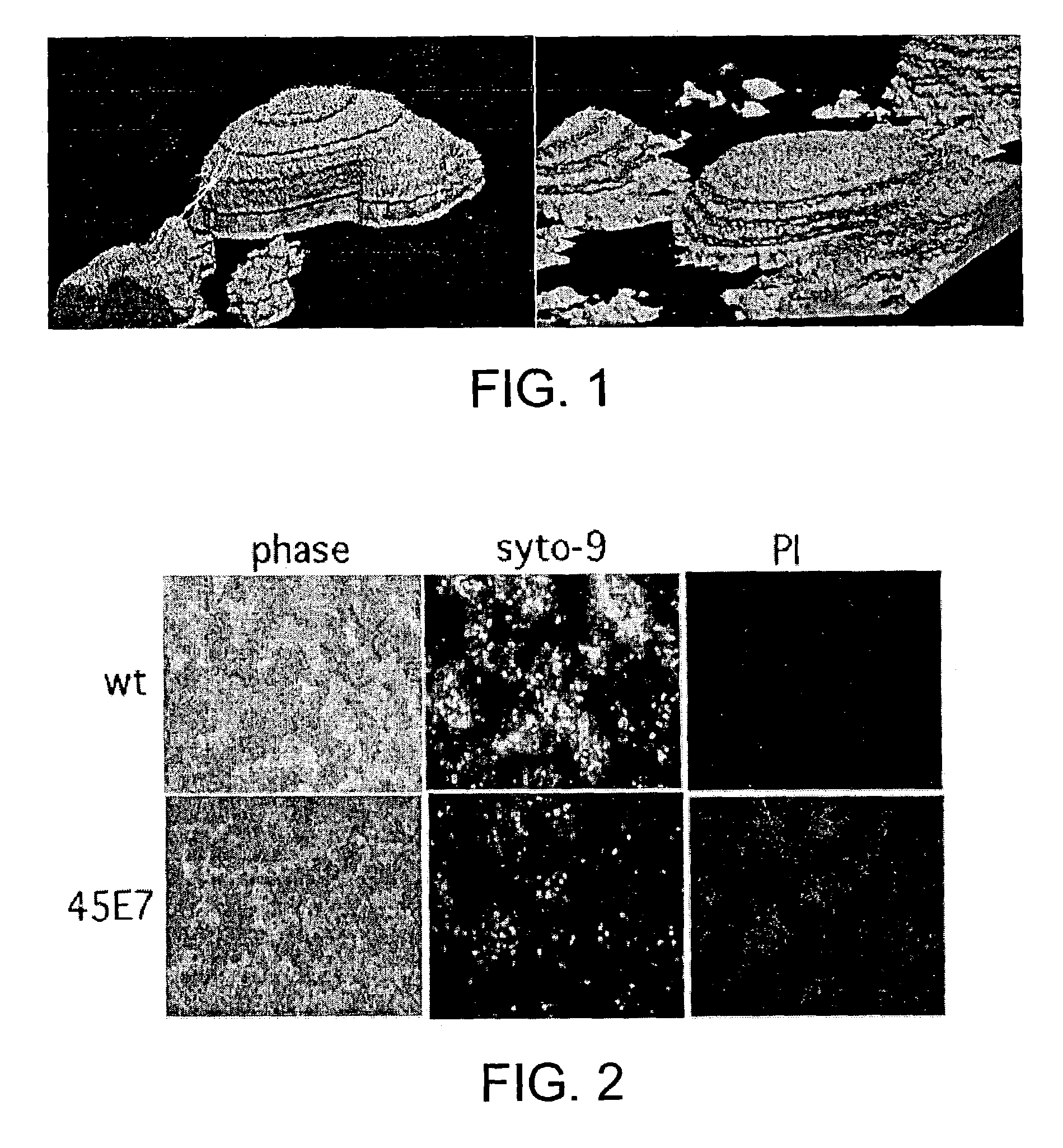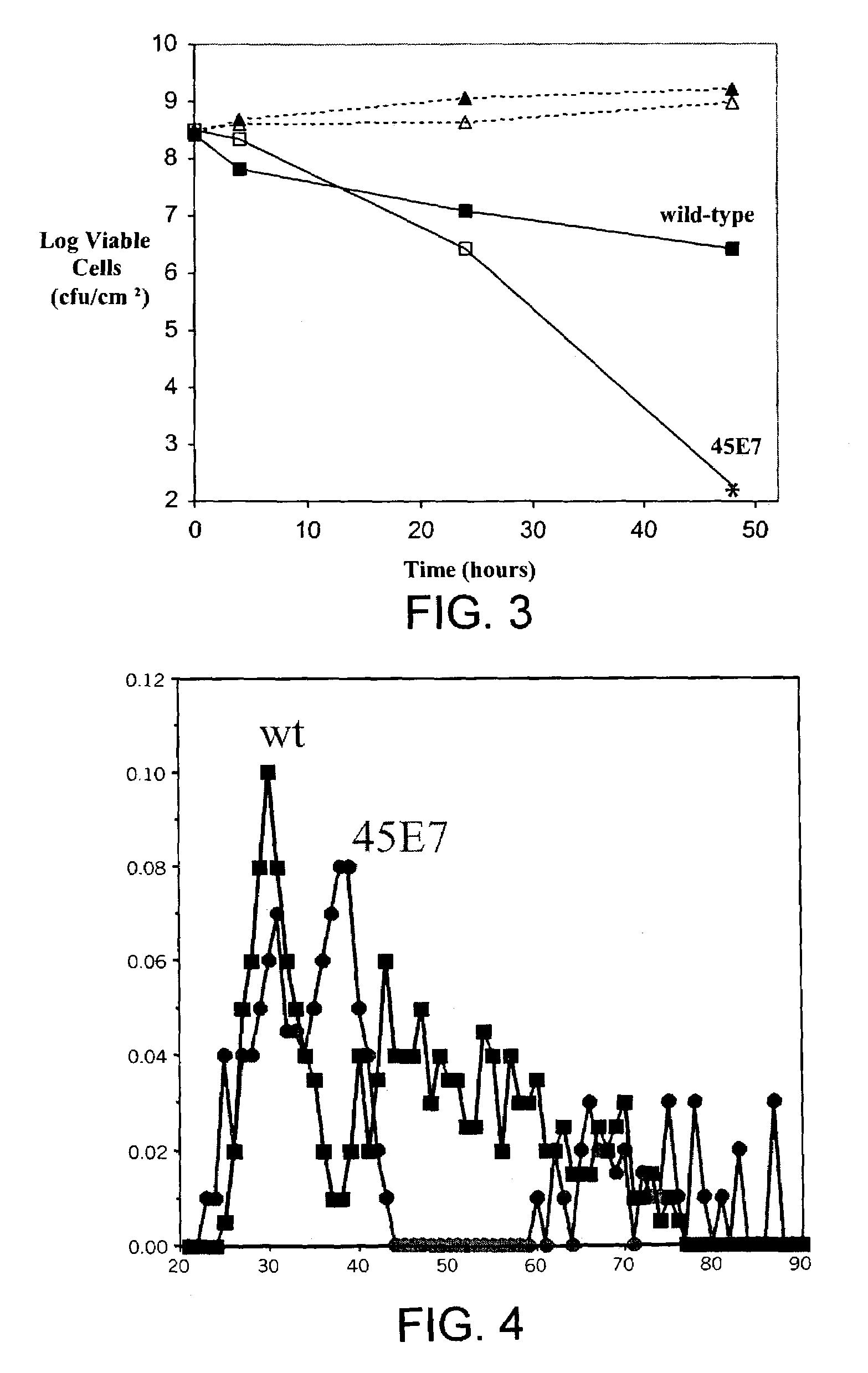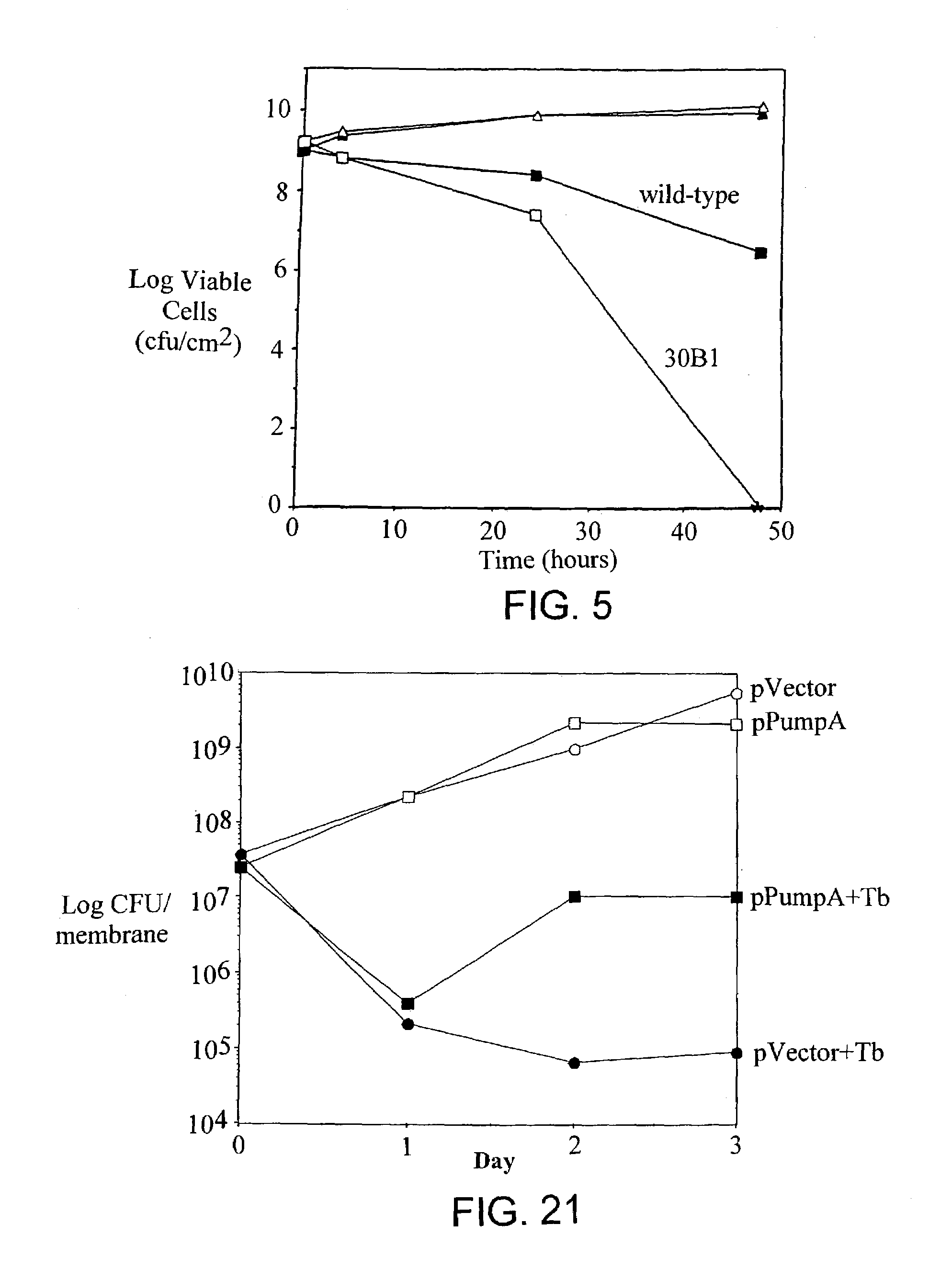Bacterial glycosyltransferase polypeptides involved in antibiotic resistance
a glycosyltransferase and antibiotic resistance technology, applied in the field of antibiotic resistance-related glycosyltransferase polypeptides, can solve the problems of toxic, inability to achieve the level of antibiotic required to eliminate biofilm bacteria in patients, and inability to control organisms growing in biofilms, etc., to achieve rapid removal, reduce viability, and determine the effect of treatment on biofilm viability
- Summary
- Abstract
- Description
- Claims
- Application Information
AI Technical Summary
Benefits of technology
Problems solved by technology
Method used
Image
Examples
Embodiment Construction
[0128]We posit that biofilm resistance to antimicrobial agents is part of a regulated developmental process and thus would require an identifiable set of genetic determinants. Based upon this hypothesis, a screen was designed to identify genes which, when mutated, would affect the ability of biofilm cells to resist the effects of an antimicrobial agent, while having no substantial effect on the sensitivity of planktonic cells growing in the exponential phase cells to the same antimicrobial agent. This screen was based on a modification of the microtiter plate assay that yielded surface attachment mutants (sad) of Pseudomonas aeruginosa and P. fluorescens (O'Toole, G. A., and R. Kolter. Mol. Microbiol. 30(2):295–304, 1998; O'Toole, G. A., and R. Kolter, Mol. Microbiol. 28:449–461, 1998). In the present studies, bacteria were cultured on the same minimal M63 medium expect arginine (0.4%) was used as the sole source of carbon and energy, and cultures were incubated for 24 hours. Other ...
PUM
| Property | Measurement | Unit |
|---|---|---|
| Electrical resistance | aaaaa | aaaaa |
Abstract
Description
Claims
Application Information
 Login to View More
Login to View More - R&D
- Intellectual Property
- Life Sciences
- Materials
- Tech Scout
- Unparalleled Data Quality
- Higher Quality Content
- 60% Fewer Hallucinations
Browse by: Latest US Patents, China's latest patents, Technical Efficacy Thesaurus, Application Domain, Technology Topic, Popular Technical Reports.
© 2025 PatSnap. All rights reserved.Legal|Privacy policy|Modern Slavery Act Transparency Statement|Sitemap|About US| Contact US: help@patsnap.com



